Amigurumi Chihuahua
After my eyeball creatures project I wanted to take a brief break from working on my own patterns and crochet something from a pre-existing pattern to hopefully be more relaxing since I could count on the pattern working out. A few weeks ago I went to my local library to get a library card and while I was there I checked out a book with some amigurumi patterns for dogs, Ami Ami Dogs by Mitsuki Hoshi. The first one called for some colors I didn't have, but the second pattern for a chihuahua only called for white yarn, which I had, so I decided to try that.
The pattern calls for making the pieces of the body independently and then joining them together. While I prefer to have the connections built into the geometry of the pattern and done via crochet stitches, this does seem to be a pretty common way to do amigurumi patterns so I figured I should give it a chance rather than giving up on the idea of using the book. I was also surprised that even though the head is done with the "continuous spiral" method that I've seen in every previous amigurumi pattern I've worked on, the more cylindrical pieces like the body and the legs call for doing a chain to move up to the next row. I only noticed that after I had already done the body with the continuous spiral technique, and when I tried to use it for the legs I kept messing up and inadvertently creating increases (I've never used this technique before, I always use the continuous spiral). The legs are only five stitches in a round, so trying to learn a new technique in such a compact space made it even harder than it normally would be. After trying a few times I gave up and switched to the continuous spiral technique that I know, figuring it probably wouldn't make much difference.
The book calls for joining the pieces together by "rolled darning", that was a new term to me but I basically interpreted it as using yarn to sew through the exposed crochet loops to join one piece onto another piece. This part stressed me out because I was simultaneously having to make an aesthetic judgment call about where to put the pieces together, hold them in place, and perform this technique that I'm not familiar with. So the "take a relaxing break by doing a by-the-book pattern" aspect of the plan basically didn't work out for me. The pattern also calls for using a plastic dog-nose piece, which I didn't have so I sewed black yarn on in a dog-nose shape. I had intended him to be able to stand on his four legs, but partly due to the head positioning he's kind of front-heavy. The head is also not exactly straight, but I think it works out since dogs do that cute head-tilt thing when they're trying to figure something out. Also, after having looked at some internet images of actual chihuahuas I think I probably should have spaced the ears a little farther apart.
Although I was frustrated trying to implement the pattern I think I did learn some things. For example, the ears are essentially done as cones and then flattened down and I think it worked out really well, the shape is nice and it seems to have a good structure. Here is a 360-degree view:
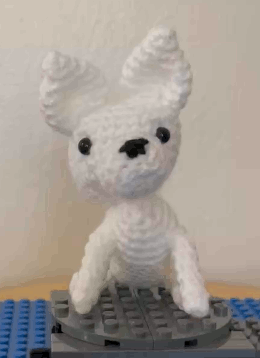
And here he is posed with some photos from the book:
I'm kind of torn about what project to work on next. A big part of me wants to adapt this pattern to the way I would do it, where the joins are built into the pattern rather than something you need to figure out after you make the parts. But another part says that if I'm going to be experimenting with patterns it may make more sense to focus on my completely original stuff than adapting this one.
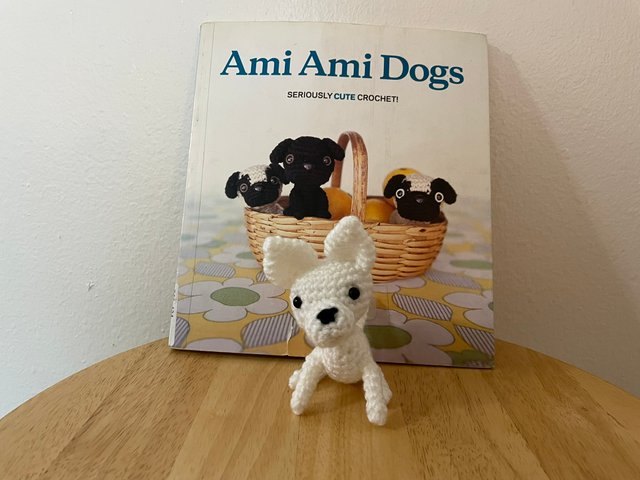
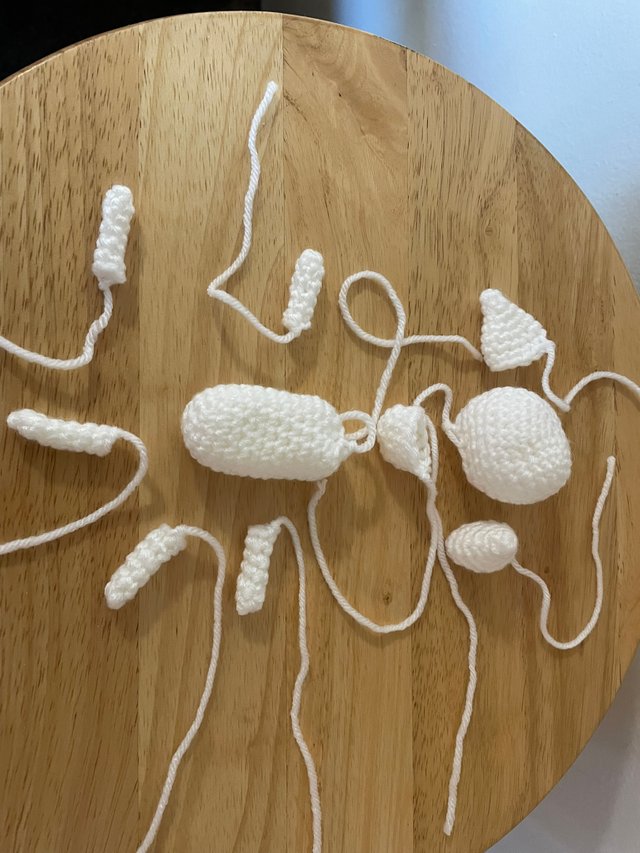
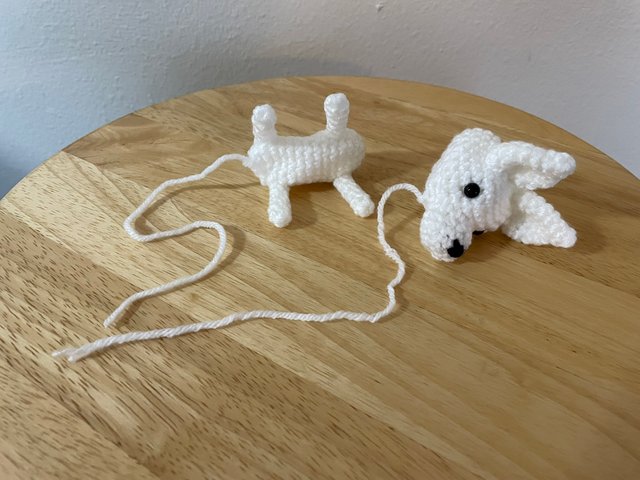
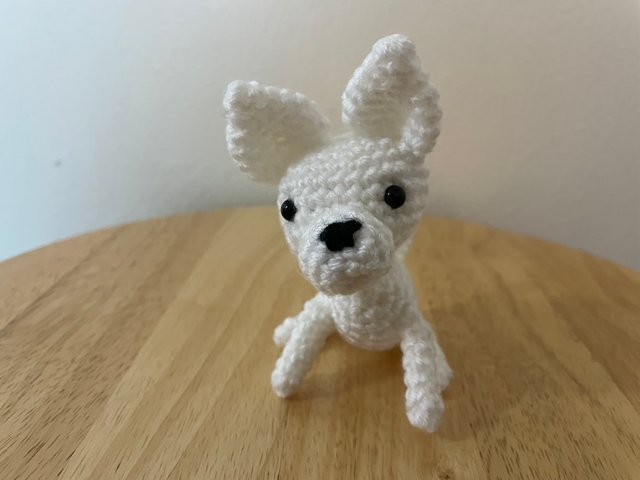
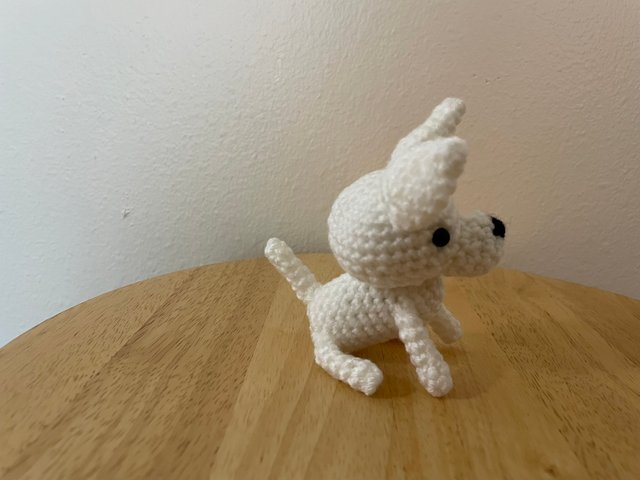
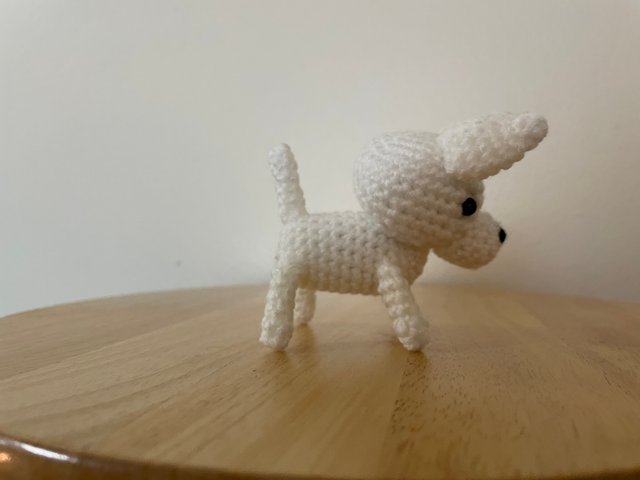
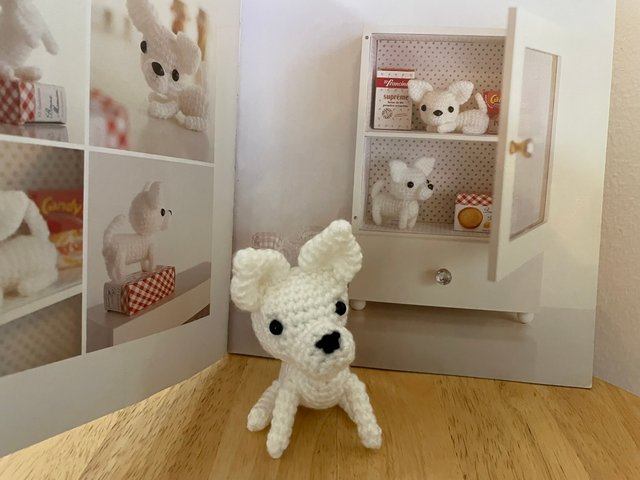
I like how the little chihuahua turned out in the end @danmaruschak ! I wonder how it relates in size to your own creations.
I totally agree with you about having to crochet all those very small 'body parts' separately. I also find it quite daunting to then have to sew the whole thing together - it's a different skill !
I still buy ready-made patterns though because I get them as presents or get tempted by the covers ! I also learn a lot from reading other people's instructions. One of the things I do is try and 'adapt' the patterns to solve issues like the separate body parts. I normally read what the designer states, but I then try to 'improve on the instructions' - sometimes my adaptations work better for me.
The chihuahua's head has a round of 30 stitches at the widest part while my humanoid pattern's head is 24 stitches around at the widest part. Factoring in some cartoony proportions I think they could read like they were in roughly the same scale if it was a larger-breed dog, but independently they're kind of roughly the same size. Here's a photo with Candyman Kane with his hand on the chihuahua's head (pencil in the foreground for scale):
Both look like made for each other and ready to go on adventures together @danmaruschak !
This is so cute 😍
I wondeer what you do with all your creations. Do you have a collection?
🍀♥️
So far I have kept them all (except for ones created as Christmas gifts). The most recent one or two are usually on my desk next to the computer I'm using right now, and there's kind of a haphazard pile of the older humanoid ones behind them on top of an old laptop. At some point I'd like to clear some space and put them somewhere better. I think most of them still feel a bit like a work-in-progress to me since I think the patterns can still be improved. Having them on the desk next to me is kind of a middle-ground between displaying them and reminding me that there are still things I want to work on.
For sure you can see what can be improved although it can have it's charm because nothing is perfect and it is a piece of art, home made.
Thank you for taking the time to answer.
A good weekend.
🍀♥️
💦💥2️⃣0️⃣2️⃣5️⃣ This is a manual curation from the @tipu Curation Project
@tipu curate
Upvoted 👌 (Mana: 6/8) Get profit votes with @tipU :)